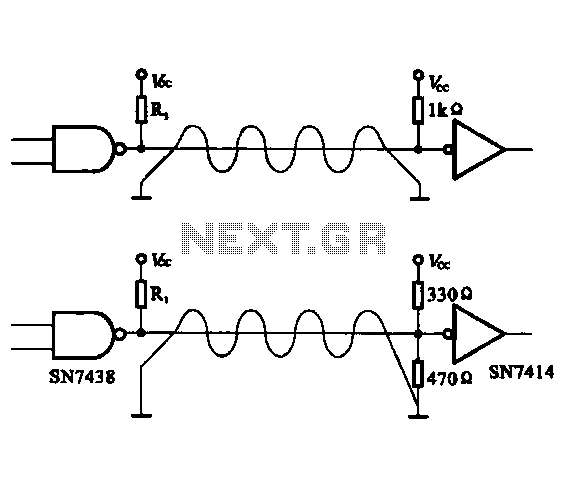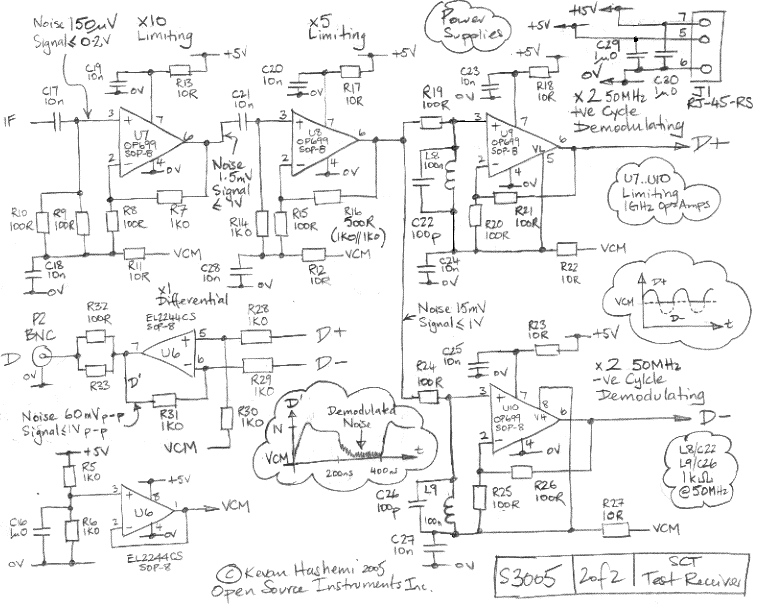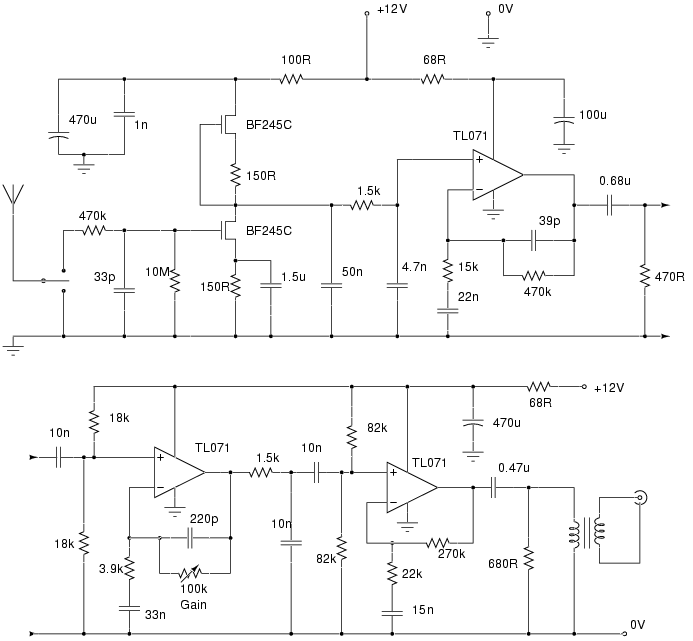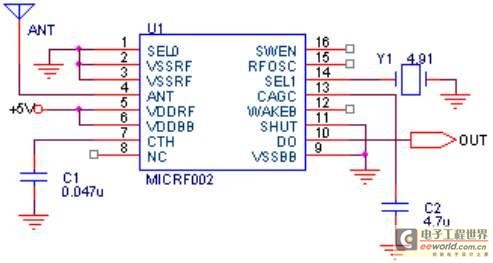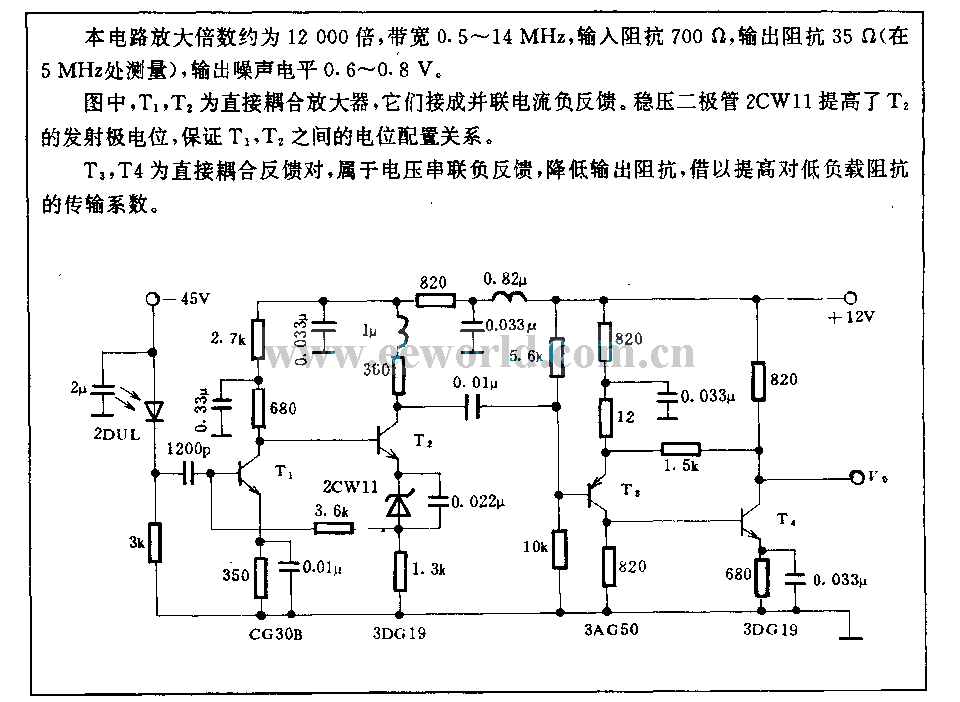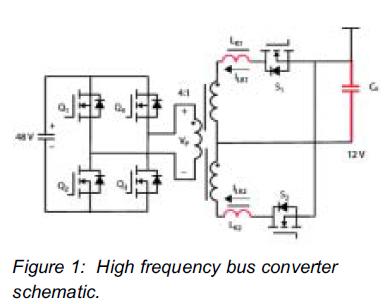
FM Transmission and Reception
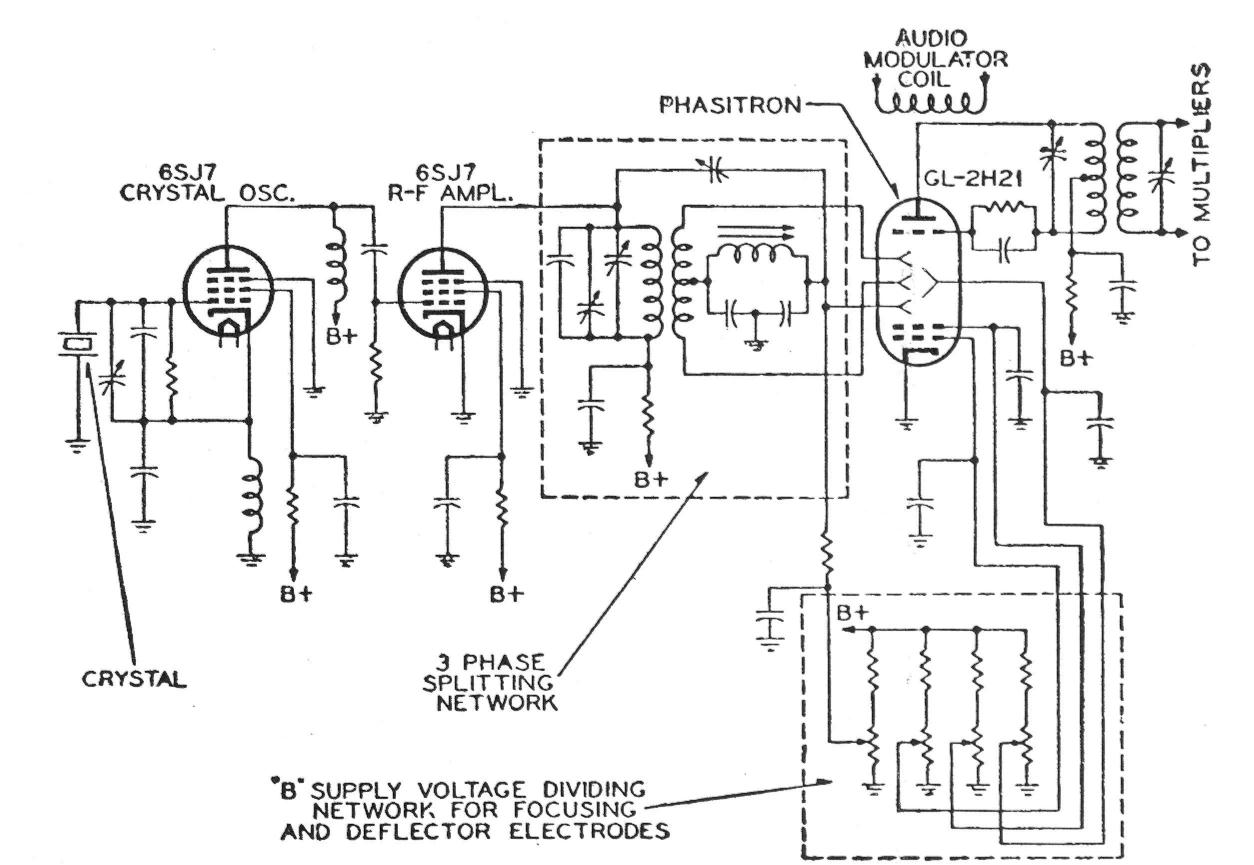
The original frequency modulation (FM) transmitters produced by the General Electric Company were of the direct FM type, utilizing a standard electronic automatic frequency control system similar to that associated with the CBS transmitter. The FM multiplication system in these original transmitters featured two triplers, achieving a total frequency multiplication of 9. In the newer FM transmitters, General Electric has adopted a significantly different approach. This new system employs indirect FM, where phase modulation (PM) serves as the initial modulation type. By implementing an appropriate audio frequency correction network, the PM signal can be converted to an equivalent FM signal. The method for achieving the initial phase deviation is innovative. These transmitters utilize the renowned Phasitron tube as the modulator, which is central to the transmitter's operation. Prior to a detailed analysis of the complete exciter and modulator system, it is essential to examine the functionality of the Phasitron tube. This tube allows for substantial phase deviations, corresponding to a peak frequency deviation of approximately 175 cycles, sourced from a crystal-controlled frequency of about 200 kHz. The Phasitron tube is a complex structure, more akin to a cathode-ray tube than traditional electron tubes, albeit with a relatively small size. A cutaway pictorial representation of the Phasitron tube is illustrated in Figure 4-13, while Figure 4-19 presents a more technical cutaway view of its functional elements alongside a simplified schematic of the connected circuit elements. In Figure 4-19, all depicted components are tangible physical parts, except for the so-called electron disk, which is created by a continuous stream of electrons emitted from the cathode and focused on anode No. 1. The deflection system is positioned above and below the electron disk. The deflector grids consist of 36 wires, with every third wire connected, forming three grids, each with 12 wires. The voltages indicated in this and the subsequent figure are representative of slightly varying operating conditions, with the heater voltage set at 6.3 volts. When typical operating voltages (as shown in Figures 4-19 or 4-20) are applied to the tube, electrons begin to flow from the cathode toward the two anodes. In the absence of any external radio frequency (RF) voltage applied to the tube, the focusing electrodes manage the electron flow from the cathode, directing it radially and concentrating it into a thin electron disk resembling a flat plate. Above and below this disk lies the deflection system, with the neutral plane of the deflector system positioned above it and the deflector grids located below. The arrangement of the 36 deflector wires ensures that every third wire is interconnected, forming three grids of 12 connected wires each. All deflector grids and the neutral grid have direct current (DC) potentials applied. However, the deflector grids receive additional RF voltage while the neutral grid does not, serving as a reference potential for the other deflector grids. The RF voltage is a three-phase voltage derived from a crystal-controlled source, which passes through a phase-splitting network, resulting in RF voltages applied to each deflector grid group being 120 degrees out of phase with one another. For optimal operation, the RF voltage should be approximately 35 volts root mean square (RMS) as measured between each deflector grid and the neutral plane deflector. The application of these three-phase voltages to the deflector grids causes the electron disk to be deflected, leading to the outer edge of the disk adopting a sinusoidal shape, as illustrated in Figure 4-21.
The Phasitron tube's operation is critical for the modulation process in the FM transmitter. By achieving wide phase deviations, it effectively modulates the signal for transmission. The complexity of the tube's design allows for precise control over the electron flow and phase modulation. The deflection system's arrangement is crucial for ensuring that the electron disk maintains its intended shape, which directly impacts the quality of the transmitted signal. The careful design of the deflector grids and the application of RF voltages ensure that the modulation process is both efficient and effective, leading to enhanced transmission capabilities in the latest FM transmitters from General Electric. The integration of the Phasitron tube into the overall transmitter design exemplifies advanced engineering practices in the field of frequency modulation technology.The original f-m transmitters manufactured by the General Electric Company were the direct f-m type employing the regular electronic automatic frequency control system similar to that discussed in connection with the CBS transmitter. The f-m multiplication system in these original transmitters employed two triplers for a total frequency multiplica
tion of 9. In the new f-m transmitters the General Electric Company employs a completely different system. The new system is one of indirect f. m. where p. m. is the initial type of modulation. By using the proper audio frequency correction network the p-m signal is made equivalent to an f-m signal. The method of obtaining the initial amount of phase deviation is new. In these transmitters the famous Phasitron tube is employed as the modulator and the operation of the transmitter is based upon this tube.
Before we analyze the complete exciter and modulator system, let us first study the Phasitron tube and see how it works. The Phasitron tube enables us to obtain wide phase deviations, equivalent to a peak frequency deviation of about 175 cycles, from a crystal controlled source of about 200 kc.
The tube itself is quite a complicated structure so far as regular electron tubes are concerned. It more nearly belongs to the class of the cathode-ray tube than to any other type, although its size is comparatively small. A cutaway pictorial view of the Phasitron tube is shown in Fig. 4-13, while Fig. 4-19 provides a more technical cutaway view of the functioning elements together with a simplified diagram of the circuit elements to which it is wired.
In Fig. 4-19 all the parts shown are definite physical parts, except the so-called electron disk which is formed by a constant stream of electrons emanating from the cathode and focused on anode No. 1. Figure 4-19. Sketch of the functioning elements of the Phasitron tube and a simplified schematic diagram of the circuits to which they are connected.
Above and below the electron disk is the deflection system. The deflector grids consist of 36 wires every third one being connected, making three grids each having 12 wires. The voltages indicated in this and the next figure are typical of the slightly different operating conditions.
The heater voltage is at 6. 3 volts. When typical operating voltages (such as those indicated in Figs. 4-19 or 4-20) are applied to the tube, electrons begin to flow away from the cathode toward the two anodes. Without any external r-f voltage applied to the tube, the focusing electrodes regulate the electrons flowing away from the cathode so that they flow in a radial fashion and are concentrated into a thin electron disk, the shape of a flat plate.
Above and below this disk is a deflection system. Above the electron disk is the so-called neutral plane of the deflector system, and below the disk are the deflector grids. There are 36 deflector wires, so arranged that every third wire is connected together, making 3 grids with 12 connected wires in each.
All the deflector grids and the neutral grid have d-c potentials applied. The deflector grids are, however, excited by an additional r-f voltage while the neutral grid is not. Therefore the neutral deflector (referred to as the neutral plane) remains as a source of reference potential for the other deflector grids.
The r-f voltage is a 3-phase voltage obtained from a crystal controlled source. This crystal voltage passes through a phase-splitting network making the r-f voltages applied to each deflector grid group 120` out of phase with each other. For correct operating procedure, the amount of r-f voltage should be approximately 35 volts rms as measured between each deflector grid and the neutral plane deflector.
These 3-phase voltages as applied to the deflector grids deflect the electron disk so that the outer edge of the disk takes on a sinusoidal shape as seen in Fig. 4-21. In other words, there now exist 🔗 External reference
The Phasitron tube's operation is critical for the modulation process in the FM transmitter. By achieving wide phase deviations, it effectively modulates the signal for transmission. The complexity of the tube's design allows for precise control over the electron flow and phase modulation. The deflection system's arrangement is crucial for ensuring that the electron disk maintains its intended shape, which directly impacts the quality of the transmitted signal. The careful design of the deflector grids and the application of RF voltages ensure that the modulation process is both efficient and effective, leading to enhanced transmission capabilities in the latest FM transmitters from General Electric. The integration of the Phasitron tube into the overall transmitter design exemplifies advanced engineering practices in the field of frequency modulation technology.The original f-m transmitters manufactured by the General Electric Company were the direct f-m type employing the regular electronic automatic frequency control system similar to that discussed in connection with the CBS transmitter. The f-m multiplication system in these original transmitters employed two triplers for a total frequency multiplica
tion of 9. In the new f-m transmitters the General Electric Company employs a completely different system. The new system is one of indirect f. m. where p. m. is the initial type of modulation. By using the proper audio frequency correction network the p-m signal is made equivalent to an f-m signal. The method of obtaining the initial amount of phase deviation is new. In these transmitters the famous Phasitron tube is employed as the modulator and the operation of the transmitter is based upon this tube.
Before we analyze the complete exciter and modulator system, let us first study the Phasitron tube and see how it works. The Phasitron tube enables us to obtain wide phase deviations, equivalent to a peak frequency deviation of about 175 cycles, from a crystal controlled source of about 200 kc.
The tube itself is quite a complicated structure so far as regular electron tubes are concerned. It more nearly belongs to the class of the cathode-ray tube than to any other type, although its size is comparatively small. A cutaway pictorial view of the Phasitron tube is shown in Fig. 4-13, while Fig. 4-19 provides a more technical cutaway view of the functioning elements together with a simplified diagram of the circuit elements to which it is wired.
In Fig. 4-19 all the parts shown are definite physical parts, except the so-called electron disk which is formed by a constant stream of electrons emanating from the cathode and focused on anode No. 1. Figure 4-19. Sketch of the functioning elements of the Phasitron tube and a simplified schematic diagram of the circuits to which they are connected.
Above and below the electron disk is the deflection system. The deflector grids consist of 36 wires every third one being connected, making three grids each having 12 wires. The voltages indicated in this and the next figure are typical of the slightly different operating conditions.
The heater voltage is at 6. 3 volts. When typical operating voltages (such as those indicated in Figs. 4-19 or 4-20) are applied to the tube, electrons begin to flow away from the cathode toward the two anodes. Without any external r-f voltage applied to the tube, the focusing electrodes regulate the electrons flowing away from the cathode so that they flow in a radial fashion and are concentrated into a thin electron disk, the shape of a flat plate.
Above and below this disk is a deflection system. Above the electron disk is the so-called neutral plane of the deflector system, and below the disk are the deflector grids. There are 36 deflector wires, so arranged that every third wire is connected together, making 3 grids with 12 connected wires in each.
All the deflector grids and the neutral grid have d-c potentials applied. The deflector grids are, however, excited by an additional r-f voltage while the neutral grid is not. Therefore the neutral deflector (referred to as the neutral plane) remains as a source of reference potential for the other deflector grids.
The r-f voltage is a 3-phase voltage obtained from a crystal controlled source. This crystal voltage passes through a phase-splitting network making the r-f voltages applied to each deflector grid group 120` out of phase with each other. For correct operating procedure, the amount of r-f voltage should be approximately 35 volts rms as measured between each deflector grid and the neutral plane deflector.
These 3-phase voltages as applied to the deflector grids deflect the electron disk so that the outer edge of the disk takes on a sinusoidal shape as seen in Fig. 4-21. In other words, there now exist 🔗 External reference
